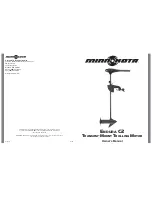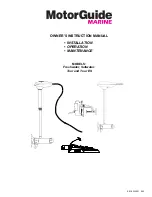MPC555
/
MPC556
EXTERNAL BUS INTERFACE
MOTOROLA
USER’S MANUAL
Rev. 15 October 2000
9-28
9.5.5 Alignment and Packaging of Transfers
The MPC555
/ MPC556 external bus requires natural address alignment:
• Byte accesses allow any address alignment
• Half-word accesses require address bit 31 to equal zero
• Word accesses require address bits 30 – 31 to equal zero
• Burst accesses require address bits 30 – 31 to equal zero
The MPC555
/ MPC556 performs operand transfers through its 32-bit data port. If the
transfer is controlled by the internal memory controller, the MPC555
/ MPC556 can
support 8- and 16-bit data port sizes.
The bus requires that the portion of the data bus used for a transfer to or from a par-
ticular port size be fixed. A 32-bit port must reside on DATA[0:31], a 16-bit port must
reside on DATA[0:15], and an 8-bit port must reside on DATA[0:7]. The MPC555
/
MPC556 always tries to transfer the maximum amount of data on all bus cycles. For a
word operation, it always assumes that the port is 32 bits wide when beginning the bus
cycle.
In
, and
, the following conventions are
used:
• OP0 is the most-significant byte of a word operand and OP3 is the least-signifi-
cant byte.
• The two bytes of a half-word operand are either OP0 (most-significant) and OP1
or OP2 (most-significant) and OP3, depending on the address of the access.
• The single byte of a byte-length operand is OP0, OP1, OP2, or OP3, depending
on the address of the access.
Figure 9-21 Internal Operand Representation
illustrates the device connections on the data bus.
OP0
OP1
OP2
0
31
Word
Half-word
Byte
OP0
OP1
OP2
OP3
OP0
OP1
OP2
OP3
OP3
F
re
e
sc
a
le
S
e
m
ic
o
n
d
u
c
to
r,
I
Freescale Semiconductor, Inc.
For More Information On This Product,
Go to: www.freescale.com
n
c
.
..


















